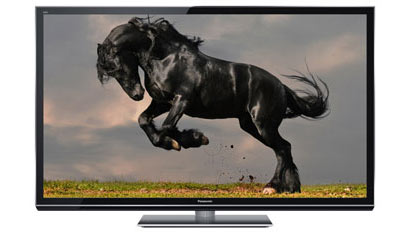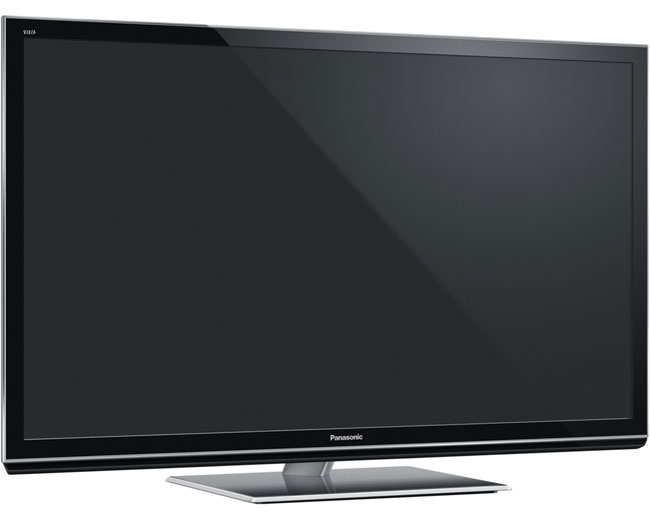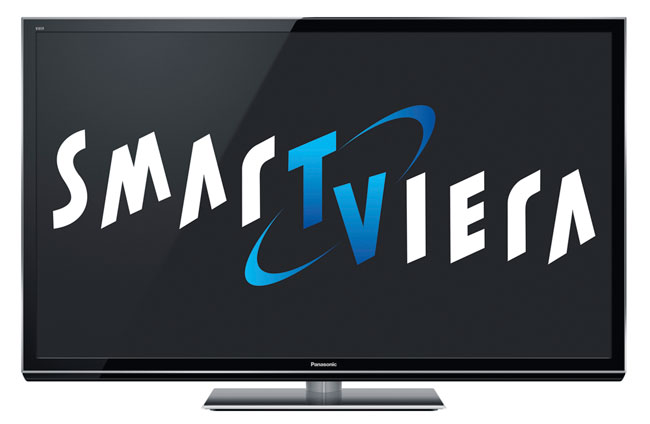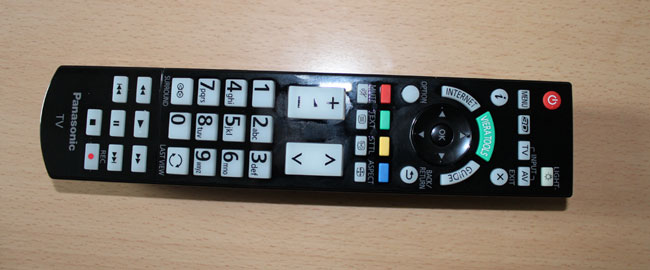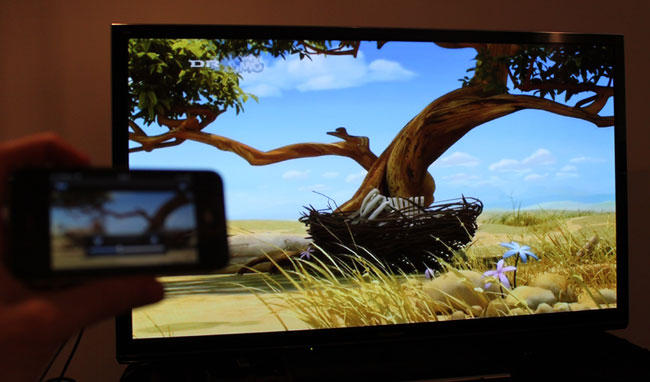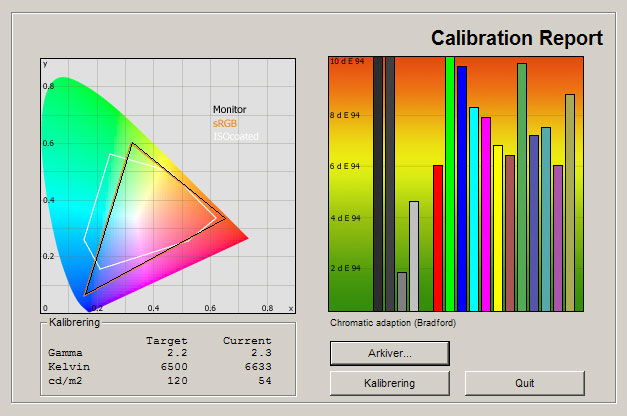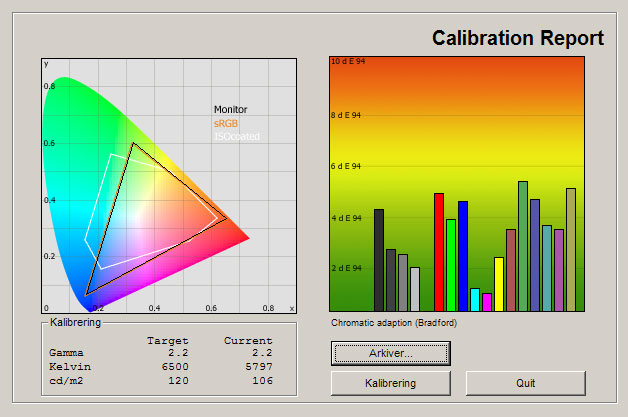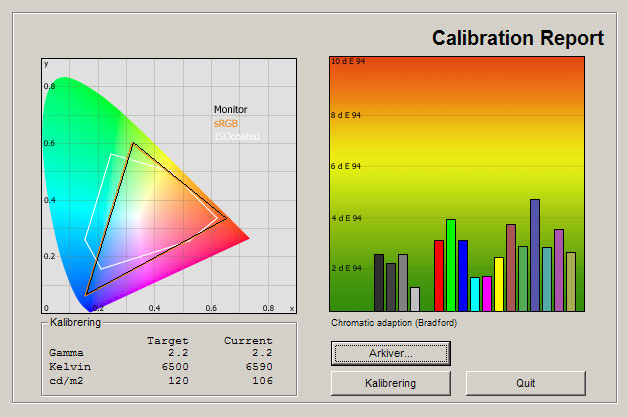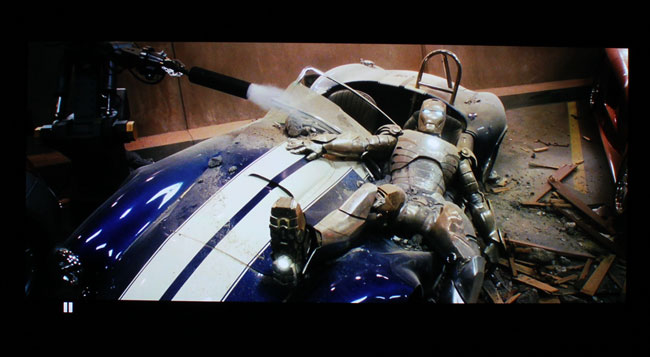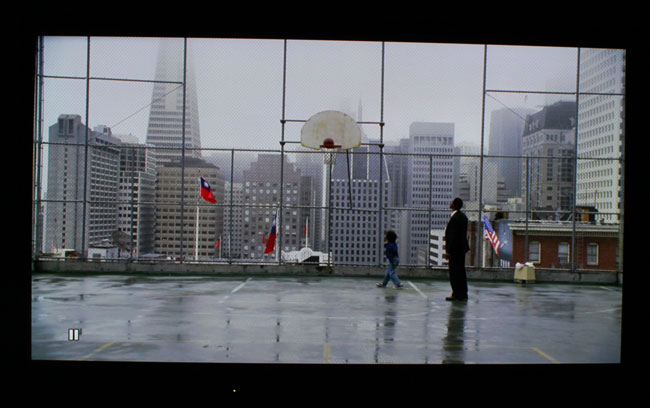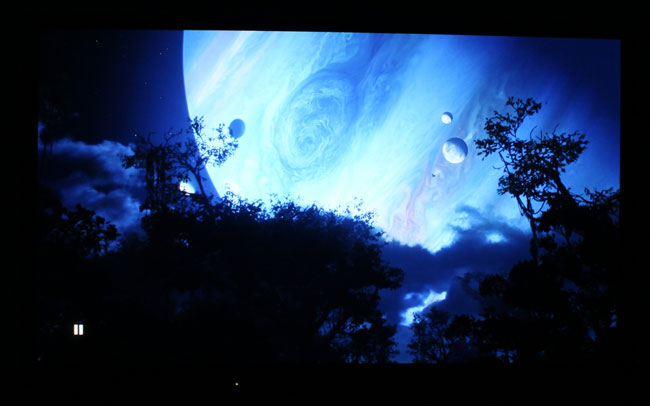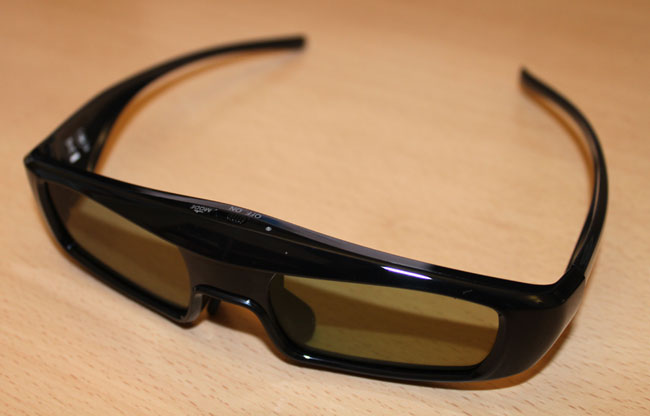Review: Panasonic GT50
TABLE OF CONTENTS Specs - Our first impressions - Test tools - Functionality - Power consumption - Calibration - Picture quality - 3D picture quality - PC & Media Center - Viewing angles - Sound - Conclusion - Debate Panasonic GT50 review
Panasonic GT50 is the successor to last year’s much acclaimed GT30 model. In 2012, Panasonic wants to focus more on Smart TV through their Smart Viera platform that has been extended with new pull and push features. Panasonic also highlights further improvements to 2D and 3D picture quality, which always has been a key focus area for Panasonic on their plasma TVs.
Has Panasonic created a new great plasma TV? Has they improved picture quality after a few years of financial tumult? And has Panasonic created a meaningful Smart TV platform? FlatpanelsHD will find out in this GT50 review.
Panasonic GT50 is available in 50, 55, 60 and 65 inches called TC-P50GT50, TC-P55GT30, TC-P60GT50, and TC-P65GT50 in the US. In Europe, Panasonic GT50 is available in 42 and 50 inches called TX-P42GT50 and TX-P50GT50.
Subscribe to our Newsletter, RSS feed or twitter to receive notice when new reviews are online.
Size: 50" widescreen Resolution: 1920x1080 Response time: - Contrast ratio: - Brightness: - Viewing angles (H/V): Angle Free Panel type: Plasma TV Wall mounting: Swivel stand: Dimensions (HxWxD): 70.4cm x 117.0cm x 4.7cm (without stand) Weight 23.0 kg Built-in speakers: Inputs VGA DVI (but possible to convert through HDMI)
Audio (type) (Audio in/out)
S-video Composite Component HDMI (4 inputs, 1 HDMI 1.4)
Outputs Audio (type) (1 output, headphones)
S/PDIF (optical)
Price and retailer:
| US retailer | UK retailer |
 |
Our first impressions
Panasonic has released very elegant LED models in 2012 but their plasma TVs have also received a face lift. The new GT50 is made from a metal frame and uses a black bezel that is slimmer than ever. GT50 is not as thin as modern LED models but with its more conservative and discreet look, it fits perfectly into many homes.The base has a metal layer inside and a plastic layer outside. It rests on a cylinder with a built-in swivel rotator function.
All input connector are located on the back of the TV and pointing either to the side or down, which is optimal for wall mounting.
Unfortunately, Panasonic has not been able to get rid of buzzing. GT50 still has a buzzing sound, coming from the backside. Buzzing was audible when moving closer to the TV.
Test tools
Our TV signal is DVB-S (satellite) from Canal Digital and DVB-T (terrestrial). We also have an analogue TV connection. Testing is done with the DVE (digital video essentials) and Peter Finzel test DVD. Testing is also done with DVD, TV, Blu-Ray and Media center/PC.We use our own monitorTest. The software supports some of the traditional test patterns used to evaluate displays as well as some new and unique test patterns developed by the people here on FlatpanelsHD.
Sony PlayStation 3 is our Blu-Ray player.
All contrast measurements are based on the ANSI methodology.
Functionality
We recently reviewed the LED model Panasonic DT50 that offers very similar functionality and the same Smart Viera platform. The remote control for GT50 looks identical and GT50 also offers the same USB recording and DLNA functionality. Therefore I also suggest you read the DT50 review for more information.However, there is one difference. GT50 is based on a dual-core processor instead of the single-core processor found inside DT50 and other cheaper plasma and LED ranges from Panasonic. Let us take a closer look.
The dual-core processor improves navigation speed and makes the Smart Viera platform feel smoother and nicer. However, not perfectly smooth and we also still experience some loading time when entering most apps. But the most interesting part is the added functionality. We took a look at the integration between Panasonic’s Smart TVs and smartphones/tablets in the DT50 review and with the dual-core processor we can unlock the functions that were left out of the DT50. The app for iOS and Android allow users to:
In order to make it work you need to activate the DLNA Server setting option in the Network settings menu. After that, the Viera Viewer section inside the smartphone/tablet app detects the TV. Here you have the option to view “Live TV” or content from a SD card or USB device connected to the TV.
It is a great feature and it worked pretty well. The app has a few seconds delay when watching live TV channels but we can accept that. You can also change the channel via the app (the TV will also change channel) and you can adjust audio volume separately on the TV and your smartphone/tablet. You can even turn of the TV screen via the Viera Remote app while watching live TV via the app, and move to your porch or garden to continue a TV show – as long as your smartphone/tablet is still connected to the home network.
Unfortunately the app crashed a few times but we expect Panasonic to fix the small bugs in future versions. Besides the bugs, Panasonic’s pull/push functions really improve integration with other smart devices, and I am sure many users will find it useful. But remember that you need one of the dual-core TVs to take full advantage of the new features.
Energy consumption
| Compare power consumption measurements on different TVs and monitors with our interactive power consumption applet here. |
 |  | |
| Standby | 0.1 W | 0.1 W |
| SD+HD | 154 W | 165 W |
| 3D | 213 W | 184 W |
After calibration we measured power consumption to 165 W (on the 50-inch model), which is decent but on par with last year’s models.
One interesting thing that we noticed is that energy consumption is lower in the Standard profile compared to most other profiles. This is probably due to strict energy consumption regulations recently enforced on TV makers.
Calibration on Panasonic GT50
Below you can see an out-of-box measurement on Panasonic GT50 in the Standard picture preset without Eco mode.| The graph says this: The number on the left is the delta value. Delta is a difference between two factors; here it’s the difference between the measured color on the panel and the actual color that is our target. |
The out-of-box settings are not very accurate and have gotten worse on Panasonic’s plasma TVs in the recent years. We know that manufacturers compete for attention in stores and this is a natural extension of that fact but we also know that the typical buyer just turns on their TV without many adjustments – if any. Therefore it is a shame to see that the standard settings are getting worse.
As you can see, color deviations are pretty significant. Color temperature is close to our target value of 6500 Kelvin, which means that colors are neither too bluish nor reddish. The brightness level is slightly too low but this is common with plasma TVs.
We quickly moved on to examine the THX Cinema profile. See our measurements below.
In the past, Panasonic’s THX profiles have been great and we have handed out much praise. This is still true and the THX Cinema profile on GT50 is very good. Gamma is not 100 % accurate but good enough to keep us satisfied. The only problem is that color temperature is slightly too low.
Panasonic has also incorporated a THX Bright Room profile designed specifically for bright rooms, such as a living room. The difference between THX Bright Room and THX Cinema is that the Bright Room mode has a higher brightness level in order to make pictures on the screen appear clearer in bright daylight. This is welcomed idea – but is not a novel feature on THX certified TVs.
We now went on to calibrate Panasonic GT50. Here is the result.
After calibration we managed to improve color accuracy slightly but we have to say that the THX profiles are excellent. Our calibrated settings are not very different from the THX settings and we only had to adjust the colors a bit to compensate for too low color temperature. For most users the THX profiles are excellent choices.
Below are my calibrated settings.
 | |
| Viewing mode: | Professional1 |
| Contrast | 36 |
| Brightness | +1 |
| Colour: | 30 |
| Sharpness: | 2 |
| Color Remaster: | Off |
| Eco | Off |
| P-NR | Off |
| Gamma | 2.2 |
| Intelligent Frame Creation | On/Off |
| 16:9 Overscan | Off |
| R-Gain | 3 |
| G-Gain | -5 |
| B-Gain | 6 |
| R-Cutoff | 0 |
| G-Cutoff | -2 |
| B-Cutoff | +2 |
Note: Some setting options are not active before you enable ISFccc in the Setup menu. The Eco option has been set to Off in the menu. Plasma TVs’ Eco functions work in a different manner than on LCD-TVs and plasma TVs cannot reach the same brightness levels. Therefore the Eco sensor is not desirable.
Picture quality on Panasonic GT50
| In this section I go through picture quality with the calibrated settings. |
A plasma panel consists of layers of glass and therefore you should expect some reflections from windows and lamps. Because of the glass layer construction, external light also tend to reflect between layer, which means that picture will look less intense and colors will look a bit washed-out. The more expensive VT50 model uses a special anti-reflective layer, which we will examine in the coming VT50 review; GT50 does not. Reflections continue to be one of the weak points of the plasma technology. This is still true for Panasonic’s 2012 line-up so remember this if you need a need TV in a very bright living room.
Color gradation is great and GT50 manages to distinguish most colors to perfection. Only the darkest colors cause some minor problems but we cannot complain. We noticed a mild form of color banding (during fast motion) in our testing scenes due to the way color dithering is used to create colors on plasma TV (seen on pretty much any plasma TV today) but GT50 gave us very impressive color reproduction.
SD pictures look awesome on GT50. Panasonic has always impressed with their ability to make SD pictures look great; not too digitalized and not too soft. This fact remains true for GT50 and even though we did not notice significant improvements over last year’s GT30 model, GT50 is a top performer. It even beats every LCD/LED model out there when it comes to SD picture quality. Our only concern is the fact that colors tend to washout a bit during daytime but the THX Bright Room profile helps make pictures more vivid and less washed-out due to the its higher brightness levels.
HD picture quality is also great. Pictures look very impressive and color reproduction is beautiful. Detailing in HD content is very high, and motion blurring is extremely low, ensuring excellent sports, action movies and games reproduction. Almost no details are lost during fast motion and that is still one of the plasma technologies’ strengths. 1080p24 content was reproduced correctly, too.
The plasma technology is much faster than the LCD technology as a standard rule and motion blurring is lower. LCDs have narrowed the gap in the recent years but are not yet on par. However, plasma TVs have traditionally struggled with phosphor trailing and Panasonic GT50 exhibits very mild phosphor trails during very fast motion, too. As noted on last year’s Panasonic plasma TVs, phosphor trailing problems have been significantly reduced to a point where it is almost impossible to see during casual viewing but if you watch black/white content – for example old movies or a game such as Limbo – you will probably notice how fast motion is sometimes accompanied by a very modest yellow, blue or green halo around moving objects. This is really nothing and we need to put it in the right context - but GT50 has not been visibly improved in this area. On the other hand, GT50 is probably in the top-5 for TVs when it comes to response time.
Input lag was measured to 24-30 ms in the Game mode, which is consistent with previous measurements on Panasonic’s plasma TVs.
Unfortunately, Panasonic has not managed to get rid of retention. We noticed some retention after prolonged use. It was very mild and only visible from a close distance but retention is still around.
Below I have measured black depth and contrast.
 |  | |
| Black level | 0.00 cd/m2 | 0.00 cd/m2 |
| Brightness | 54 cd/m2 | 106 cd/m2 |
| Contrast ratio | - | - |
Contrast ratio +/- 50
After calibration we measured black depth to 0.00 cd/m2, which suggest that black depth is perfect. However, when we examined GT50 in a completely dark room we noticed that some light still slips thru. Black is not 100 % black. Our testing equipment cannot measure below 0.02 cd/m2 so we are somewhere in between. Nevertheless, the results are great and shows that Panasonic continues to improve their plasma TVs. Black is now deeper than ever and it adds vividness and intensity to games, movies and TV shows.
Shadow detailing is great, too. Only the 1-2 darkest shades of grey were impossible to distinguish from black. Some dark colors tend to “flicker” due to the way plasma TVs reproduce dark colors but it is only visible when you move quite close to the TV screen.
Lastly we examined GT50 in a dark room and as expected no clouding or bleeding occurred. This is not a common plasma issue so no surprises here. It was extremely difficult to demonstrate in a picture so we left it out, as it served no purpose.
3D picture quality on Panasonic GT50
| We used the PlayStation 3 and a 3D Blu-ray player to test 3D movies and 3D games. In this test I want to examine 3D depth, 3D picture quality, 3D crosstalk and finally include a small comparison to some of the other 3DTVs on the market. |
You can see the new 3D glasses from Panasonic below. They are extremely light, and although still a bit clumsy, less uncomfortable than before. The 3D glasses have an On/Off switch that also allows users to switch between 3D and 2D viewing.
3D picture quality is great and we have praised Panasonic’s 3D plasma TVs many times in the past. Unlike the DT50 model, I believe active 3D is a good fit for plasma TVs due to the much lower level of crosstalk. On GT50 we noticed almost zero crosstalk, except for in our stress tests. 3D detailing is high and color reproduction is also more accurate than on the majority of 3DTVs today, thanks to an integrated THX3D profile. Added together, Panasonic GT50 has the best 3D picture quality we have seen to date.
But I also still believe that the active 3D technology has its limitations. If you can limit your 3D viewing to a completely dark room there is no debate that active 3D on a plasma TV offers the best experience but if you also want to watch 3D during the daytime you need to be aware that flickering still occurs – even after 3 generations of 3DTVs and active 3D glasses. For the majority of users, I still believe passive 3D is a better solution.
PC and Media Center
In order to achieve 1:1 pixel mapping you need to select the aspect ratio called “16:9" in the TV settings. You also need to deactivate 16:9 Overscan.Viewing angles
The viewing angles are very wide and color intensity is maintained to near-perfection. Even from extreme angles, colors look vibrant and intense. The darkest colors, including black, remain unchanged from far off to the side. Therefore we have not taken pictures.Sound quality
We were positively surprised with the speaker’ capabilities in the Panasonic DT50 LED model. GT50 is fairly good, too, but we are not overwhelmed. The TV lacks bass and I actually felt that DT50 gave us more of that. At times sound seemed a bit too flat and for a TV in this price range we had expected a bit more. For casual TV watching the speakers are fine but if you want to include GT50 in your home cinema, try a separate speaker solution.For movies, games and music I recommend separate speakers.
Conclusion
Panasonic’s Smart Viera platform is left graphically unchanged but Panasonic has added a range of features in the 2012 models. The dual-core based TVs (such as GT50) even supports new push and pull media functions that allow you to share media content between your Panasonic Smart TV and your Android and iOS smartphones & tablets. It is a useful feature but the Smart Viera platform still lacks a lot before we can recommend it. Our GT50 also struggled with light buzzing.For years, Panasonic’s plasma TVs has widely been considered some of the best TVs when it comes to picture quality. The plasma technology has its inherent limitations and GT50 continues to struggles with reflections during daytime and dithering noise in the dark colors but besides that it is an awesome TV. Black depth is nearing perfection, color accuracy is very impressive in the THX profiles and response time is very fast with only a very low level of trailing (overdrive trailing), which ensures excellent reproduction of sports, games and movie scenes. 3D picture quality is also very good.
In the end I think it is fair that say that if you have had a hard time settling with the plasma technology’s weaknesses in the past, GT50 does not change things for you. On the other hand, if you have preferred Panasonic’s plasma TVs – or any plasma – in the past, GT50 is a strong candidate for your next TV. GT50 is a really impressive TV and one of Panasonic’s best TVs to date. Therefore we also award it with our Highly Recommended award.

Press the award logo to learn more.
Price and retailer:
| US retailer | UK retailer |
 |
 |  |  |
| SD & HD picture quality | Buzzing | Living room |
| Impressive black depth | Dithering in dark colors | Home Cinema |
| Color reproduction | Reflections and color wash-out during daytime | 2D/3D gaming |
| 3D picture quality | Expensive 3D glasses and flicker during daytime | |
| Push/Pull media features | Smart Viera platform still lacks content & quality | |
| Very fast response time |
Subscribe to our Newsletter, RSS feed or twitter to receive notice when new reviews are online.

